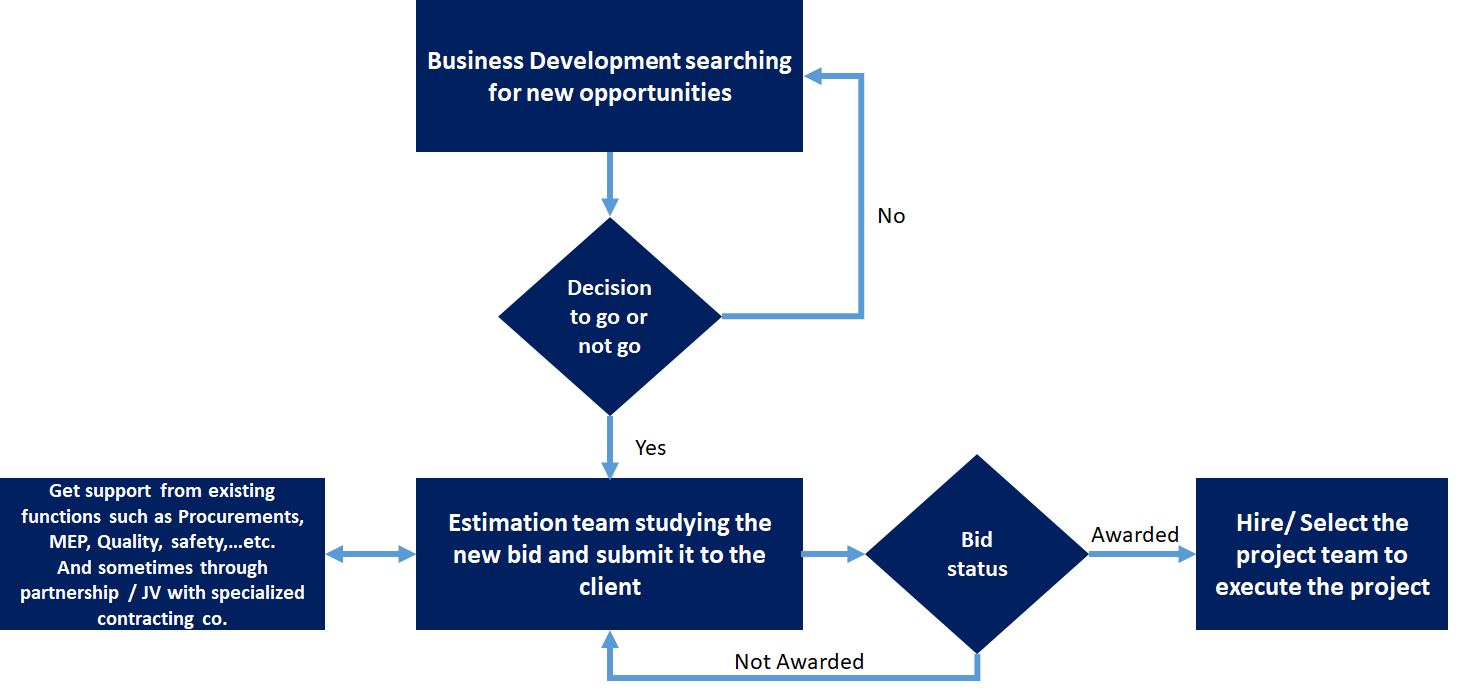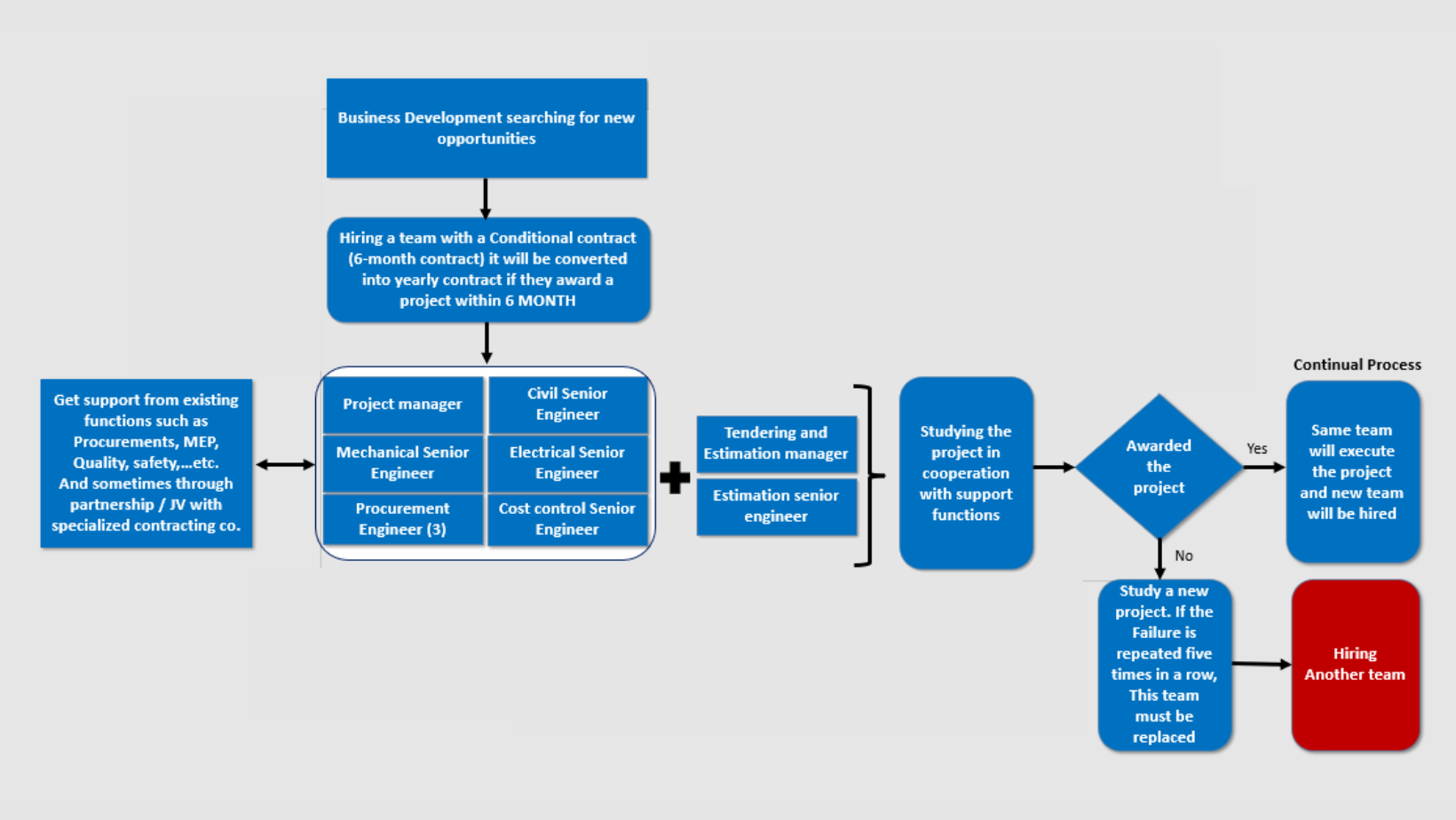Enhancing estimation performance for contracting companies

Image source: Guillaume TECHER | Unsplash
In the construction industry, the main product is the project undertaken for a specific client, the project owner. To award a project; the contractor has to study the project and submit his quotation. In most cases, the client selects the lowest bidder to execute the project.
Due to the nature of the contracting business, contracting companies cannot expect to award every project they have studied, and the winning ratio is most likely 20% to 30% from the overall tenders in which they have participated. That means contractors may lose more bids than awarded, which is quite alarming. Experts in this industry know this very well.
The main idea of writing this article is to introduce a new approach to contracting organization that can enable the contractors to increase the percentages of awarded projects and reduce the associated risks and cost impact, but before that, let us understand the current process and its drawbacks.
Most contracting companies use fixed estimation teams with some support from technical functions or outsourcing some services if needed, as shown in the conventional estimation process flow (Figure 1).

Figure 1. The conventional estimation process | Illustration by the author
- A fixed estimation team may lack essential experience in a particular type of project.
- Estimators’ work becomes routine without creativity. Whether they are awarded a new project or not, they will get paid every month.
- Continual loss of projects by the same estimators will demotivate them and eventually lead to losing their passion. Instead, they will try to find excuses or justifications rather than improve the process.
- Awarding a project doesn’t mean that it will be profitable. Contractors can award a project because they are the lowest bidder; however, hidden losses will emerge during the project’s progress.
- A misalignment between the bidding prices and the project budget prepared by the cost control team can lead to a significant loss even before the project starts.

Figure 2: a new estimation process | Illustration by the author
Steps of the new process
- The company should reduce the number of fixed estimators to the lowest possible level.
- After identifying the new opportunities, the company will know more details about the project type and engineering characteristics of the project. Based on that, the company will hire a qualified project manager with previous experience in similar projects. It is the same thing for senior engineers in civil, electrical, and mechanical disciplines and professional procurement engineers who are familiar with the type of construction material used in that project.
- If necessary, this team will study the project in conjunction with the estimation team, other support functions, and the partner company.
- If the company awarded the project, this would prove the idea from the first round. If not, the company will give the team a chance to learn from this failure and enhance their experience to perform better in the next bid.
- If the project is awarded, the same team who studied the project and calculated its budget will be mobilized to execute the project, and the company will hire a new team instead, and so on.
- The company has to decide on a certain number of trials for this team and then make a decision to replace them if the failure is repeated. I would suggest five trials within six months according to a conditional contract.
The advantages of the new estimation process
- It is more dynamic than the old routine process.
- The team who studied the project and calculated the budget is the same team who will execute the project.
- Encouraging the project team to put their best effort into awarding a project within a six-month timeframe.
- When the winning ratio is increased, it will save huge costs if we compare the (overhead cost of the new approach vs. sales) with the (overhead cost of the old process vs. sales).
- Increasing profitability by increasing the number of awarded projects
- Increasing efficiency and productivity through better use of company resources and workforce
The challenges of the new process
- How fast the company hires a competent project team every six months could be an issue, and it requires a professional recruitment team to achieve this successfully.
- Not everyone can accept the six-month conditional contract, but professional recruiters who are excellent negotiators can clearly explain the benefits to the candidates. It is a win-win agreement. This exercise will spot incompetent people before recruiting them, but the confident project managers and engineers will accept the challenge because they know they can.
- Change resistance to shift from the old process to the new process. Some people know they are losing but still believe the old process is the best way to award projects.
Undoubtedly, getting an accurate estimate from experienced engineers is invaluable to the company; this is why the team you choose to study your bids should be able to furnish an accurate cost estimate that is precise enough to increase your opportunities of awarding projects. The new process helps the company to enhance the accountability of the project team with clear ownership of the project execution within budget, scope, and specification with full understanding and involvement from day one. The new process can be tested in a pilot project to ensure its effectiveness and then implemented on a large scale.
About the author

Mr. Ihab Ibrahim Alsakkti is the chief strategy officer of Alkifah Holding Company. He is consistently focused on the organization’s future direction and aligns his team to actualize that vision. He established the company’s Innovation lab, which serves as the hub employing the methods of agile management and innovation strategy to devise novel ideas that can either disrupt or complement the overall company. He supported senior management with strategy formulation and execution workshops and the development of short-term and long-term strategic plans. He also coached and mentored junior staff through ongoing extensive self-development sessions and training programs, specifically in project management for new initiatives, performance management, KPI selection, balancing, and activation.

